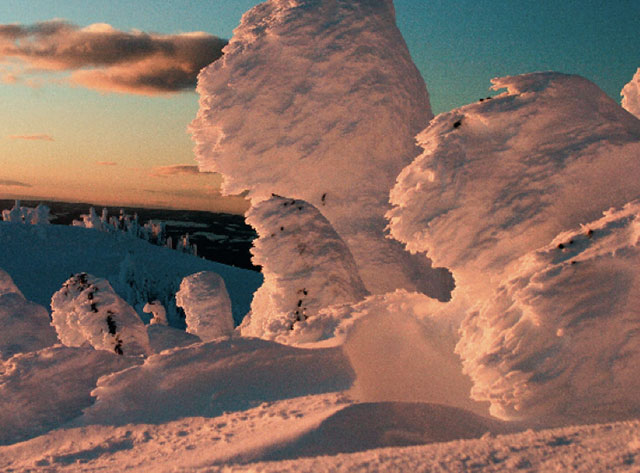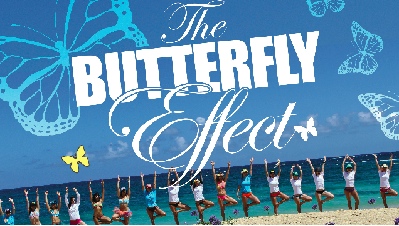
Using the holiday-family-downtime to sort out a little snowy get-away? Try something eco-friendly this year and go for one of the following resorts that we checked out for the magazine last winter…
Winter sports will never be a 100 per cent eco-friendly as mountains don’t need humans to feel well. Most of the time it’s the opposite: the more people, the worse for it is for nature. But there are a few resorts that try to treat these precious resources as considerately as possible, so better spend your notes there than elsewhere
Words by Melanie Schönthier, photos from Avoriaz Tourist Office, Tippy Corps/SunPeaks, Roland Hauschka/QParks
Kitzsteinhorn, Austria
Nestling high in the sky at 3020m, Kitzsteinhorn, which opened in 1966, was the first ski resort in Austria located on a glacier. Today lifts access 41 km of piste from the first snow fall in October until the last bits of slush in May, while two top-notch snow parks including a superpipe and a beginner line keep the stoke up, plus there are wide and varied backcountry options. But the resort rising up from the little mountain village of Kaprun not too far from Salzburg also living up to its pioneer role when it comes to protecting the environment. In 2007 Kitzsteinhorn was awarded the environmental certification ISO 14001 which obliges the resort to steadily progressing its environmental protection. Slopes have been renaturalised and fossil fuels banned, with all electricity now generated through solar panels. And plastic packaging is banned from the restaurants and shops.

1.978 m – 3020 m
Lech-Arlberg, Austria
The Arlberg is the birthplace of alpine skiing, with lessons on “bending ze knees” taking place here as early as 1906. Today, it’s a massive resort with 84 hi-tech lifts, more than 1000 instructors, 280 km of piste and about seven metres of snow per year for your shredding pleasure. The cheesy snow movie “Chalet Girl”, which hit the cinemas last winter, was filmed here. But a lot of attention is also paid to the environment. Outside the village Lech, a biomass heating plant provides energy and warm water for more than 100 hotels. It’s run on sustainable wood from the surrounding forests.
1.300 m – 2.800 m, end of November – April
Serfaus, Austria
Despite having a reputation as a family resort, Serfaus’ has an infinite number of freeride spots for powder hounds and you’ll be able to find fresh lines even days after it last snowed. But since the innovative girls freeski event Nine Queens has taken place here last March, the resort also earned itself a reputation in the freestyle skiing world. Equally innovative is one of Serfaus’ environmental projects: the village subway. The road to Serfaus ends in a car park, from there you can only get around on the free subway and in the village itself you won’t see a single car.
1.427 m – 2.770 m, December – April

Davos, Switzerland
At an altitude of 1560m, Davos is Europe’s highest city, but the mountains surrounding it are way more interesting. Five peaks await your exploration, Freeriders should look out for the Pischa with its numerous fixed but unprepared slopes. If the powder is gone, you should visit the Parsenn with its boardercross course or the pipe and park at the Jakobshorn where the limits get pushed at the 6 Star TTR O’Neill Evolution at the beginning of every year. But Davos doesn’t just take care of your freestyle skills but your green conscience too. The village was granted the label “Energy Town” by the Swiss Federal Office for Energy which means that at least 35 per cent of the used energy is covered by hydropower and other renewable energies.
1.200 m – 2.844 m, end of November – April
Saas-Fee, Switzerland
Snow is guaranteed up here as lifts run up to 3600m, even in August when you get a great view of snowy summits amongst one of Europe’s biggest summer ski resorts. But it isn’t just the backcountry and park which snowboarders love at Saas-Fee, the best parties in the Alps go off at the legendary “Popcorn” bar in the town’s centre, especially when pro rider and Saas-Fee local Fredi Kalbermatten aka DJ Fredi K is turning the beats on. The environment gets its fair share of attention too. Cars are banned from the village, so you have to walk or take the free buses to get around.
1.800 m – 3.600 m, all year

Schnalstal, Italy
The lifts on the Italian glacier rise up beyond 3200m, and this resort is a bit too far from the big winter hotspots so crowds on the slopes and at the lifts are kept to a minimum. But thanks to the massive Nitro Snowpark, the Schnalstal is an insider tip on the freestyle scene. But also the demands of eco-minded riders are well served here. This spring, the resort was given the “Pro Natura – Pro Ski AWARD 2011” has been for its efforts in dealing with climate change, protecting the glacier and dealing with sewage water. The only downer is the elevated parking area, which causes a massive traffic load at 2000m.
1.999 m – 3.200 m, all year
Avoriaz, France
Another car-free resort! But Avoriaz takes it one step further as in winter time there is nothing but slopes between the hotels and apartment blocks which means strapping in and out on your front doorstep! Avoriaz is located in the middle of “Portes du Soleil”, a massive ski circus that stretches from France to Switzerland. Possibilities are endless but you definitely should miss a few runs at “The Stash”, a concept snow park designed by Jake Burton, where all the obstacles are made of wood. 
900 m – 2.466 m, December – April
Sun Peaks, British Columbia
Environmental protection is all in the detail here as it’s the little things that can make a big difference. All the toilets in the resort are specially designed to reduce the water consumption, piste plans and booklets are printed on recycled paper, lifts are operated using energy from hydro power plants, and cars were banned from the town. Canada’s third biggest ski resort also boasts over 2,000 hours of sunshine a year and you get to ride in fluffy champagne powder and party in some fairly stylish aprés ski bars.
1.255 m – 2.080 m, December – April
Winter Park, Colorado
A small resort with a lot to offer, from endless powder fields and amazing tree runs to a great rail set up and a well-shaped terrain park. In terms of environmental protection, Winter Park is the only resort in the States that you can reach by train. But that’s not the only green accomplishment, almost all the lifts have been optimised to their best energy efficiency, a shuttle takes employees to work, and thanks to the increased use of electronic post in the administration the consumption of paper has been reduced by 75 per cent.
2.743 m – 3.676 m, November – April
Sugar Bowl, California
Three hours from the majestic city of San Francisco, Sugar Bowl is not the biggest resort in the world (with just 10 lifts) but it’s extremely diverse. In between four peaks you can find steep chutes that will give you goosebumps aplenty, wide backcountry bowls, easy runs and four huge snow parks that make their European brothers look small, like really small. But the best thing about Sugar Bowl is the huge amount of snow which falls every year, they get 13m a season, and the operators are super-committed to the protection of the environment with the entire resort being run on wind power.
2.097 m – 2.555 m, November – April





